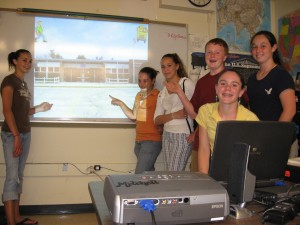Students as Town Planners

Originally appears in the Fall 2007 issue
During faculty orientation in my first year as a teacher, my principal hosted an historical walking tour of a mill village in our northeastern Connecticut town. Little did I realize at the time that this tour would be the inspiration for my career in civics education. Mr. Babcock showed us the train station, the small ethnic neighborhoods, the churches, the workers’ houses, the company store, the owner’s mansion, and, of course, the mill where most of the townspeople worked long ago. His family had emigrated from Sweden during the Industrial Revolution and he was proud of his heritage and community. When school got underway, I asked him to take my ninth grade geography students on a walking field trip of the town so that they might gain more background in the history and geography of their environment. To my surprise, the students were enthralled as they learned about their own community. They asked a million questions and made many connections to their own families, relatives and friends. From that point on, it was easy for me to talk about faraway and abstract places by making analogies to our local community.
Over the years, I added to this strategy of using my students’ hometown to teach geography by incorporating topics related to community growth and development. For example, when I moved to my present position at a middle school in Coventry, Rhode Island, the local papers were running stories about the town’s rampant population growth and sprawl. I had my students predict — with frightening results — what the town’s population would be if it continued to grow at the current rate for 10, 25 and 50 years. The students then created PowerPoint presentations and posters describing what they believed would happen to their town if the population growth trend continued and, most importantly, what they thought should be done about it. They presented their results at a town council meeting, using real data and broaching issues that the council was currently considering. The students were proud of their accomplishments and had a greater feeling of attachment to their community and responsibility for helping it to change in positive ways.
This content is restricted to subscribers only.
If you are not yet a subscriber, please consider taking out a subscription here.
If you are an existing subscriber, kindly log in or contact us at info@greenteacher.com for more information.










